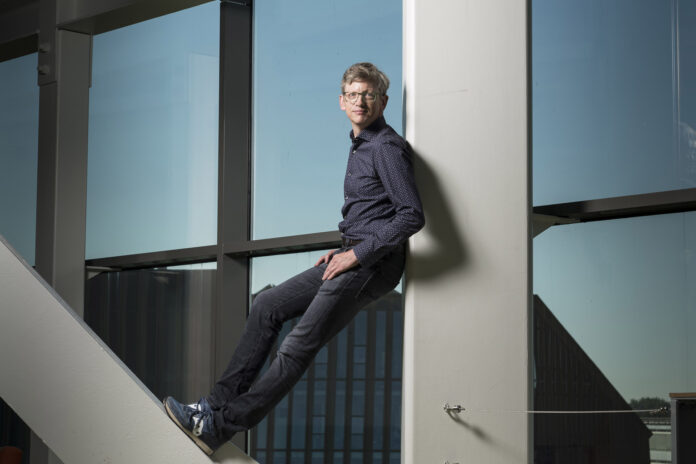The UG’s building plans tend to not be very realistic. They always suffer delays and there’s always something or other that’s either not working or not working properly. The same goes to the Feringa Building, columnist Dirk-Jan Scheffers has noticed.
I’d planned on writing a light-hearted column about oranges, but current events caught up with me.
Last week, UKrant published an article about the frustration among researchers who recently moved to the new Feringa Building.
In fact, the PhD candidate who just three weeks ago was raving about the labs and their perfect set-up, is now saying how silly it was for the group to move before the laboratory was finished. In the meantime, professors are looking for different spaces to do their experiments, some of them even returning to their old labs.
It kind of reminded me of the start of my tenure track at the UG. When I applied, they told me I would be working at the brand-new Linnaeusborg, which would be fully operational by the time I started my position. When I did, I actually got a space in the same Biological Centre in Haren I’d left ten years earlier to explore the academic world.
The construction market, earthquakes, bat; there’s always some unexpected problem
My move to the Linnaeusborg a few months later went smoothly; there really wasn’t all that much to move. But the Linnaeusborg had its teething problems, too. The climate control system didn’t work, the power current hadn’t been installed where it should have been, and the animal pens had been finished with a non-soluble coating, which made it impossible to clean them.
Whenever the university announces large-scale construction or renovation plans, there are usually two things you can predict fairly accurately: the plans will exceed their budget and they will not be delivered on schedule. The third rule is that the delay and/or the budgetary excesses will be blamed on external factors. The construction market, earthquakes, bat colonies, safety precautions, or judges holding things up; there’s always something the university hadn’t counted on.
The only UG construction site of the last decade where nothing went wrong, at least according to the people in charge back then, lies thousands of kilometres outside the city, in the Chinese city of Yantai.
Moves like these prove that more time should have been spent on testing and fine-tuning
Since it’s so easy to predict that something will always go wrong with the UG’s construction projects, I find it hard to understand why they still count on the best-case scenario. It only ever leads to inconveniences, such as the cold and unhealthy climate at Nijenborgh 4, where maintenance refused to fix things for years because everyone was about to move out of the building anyway.
It also leads to a double workload. The UG’s guarantee that the Feringa Building would be ready for educational activities by the start of the academic year turned out to be hogwash.
All of a sudden, they needed to find (and sometimes even rent) other suitable spaces. The scheduling also had to be changed overnight, which caused quite a headache for the people in charge of that at the faculty. Moves like these also prove that more time should have been spent on testing and fine-tuning critically important installations.
I hope the problems in the Feringa Building, which, by the way, is gorgeous, are quickly resolved. But I also hope the university will use more realistic scenarios for future renovation or construction projects.
Lastly, I hope the next month is uneventful, allowing me to tell you about orange juice next time.
DIRK-JAN SCHEFFERS




